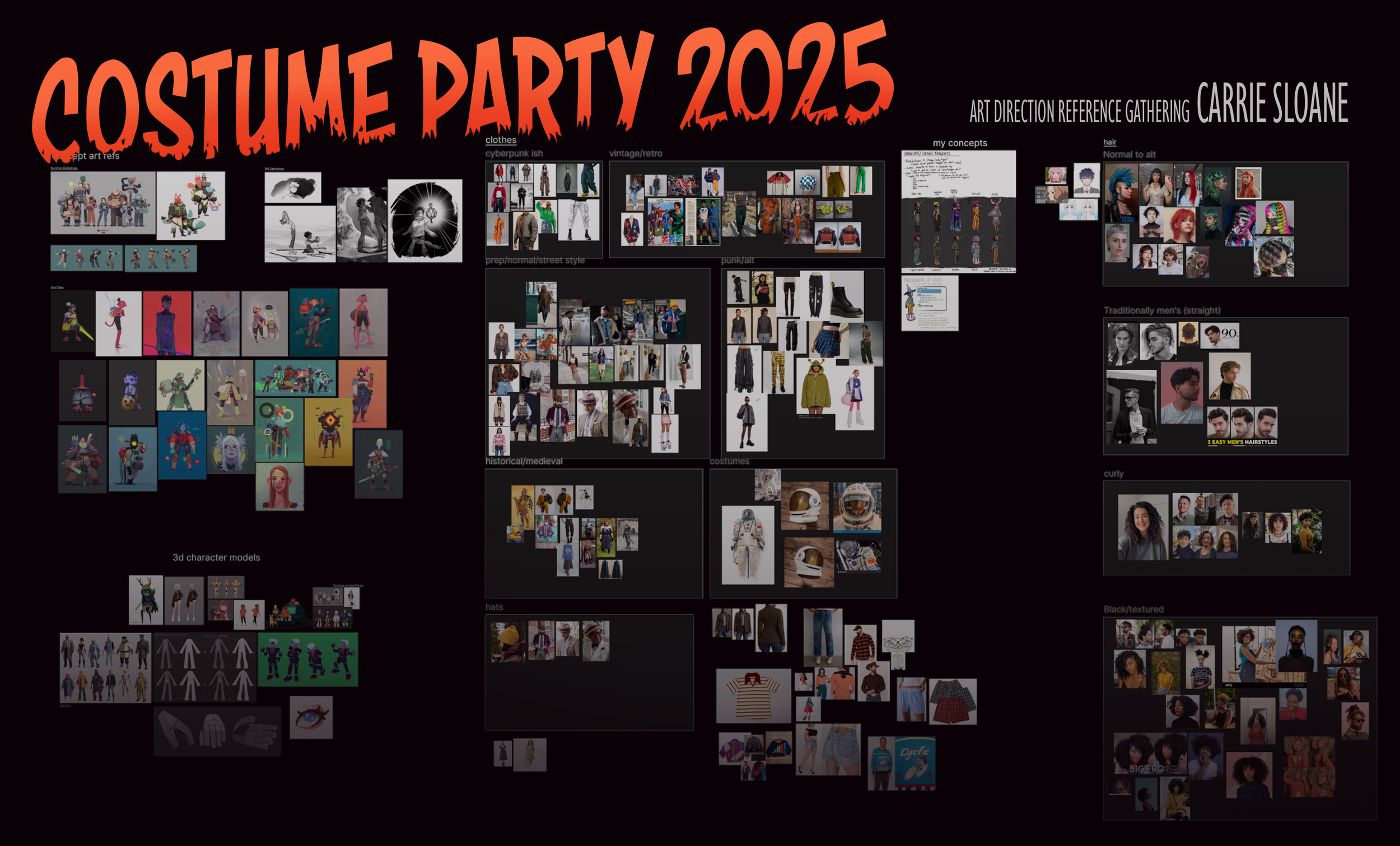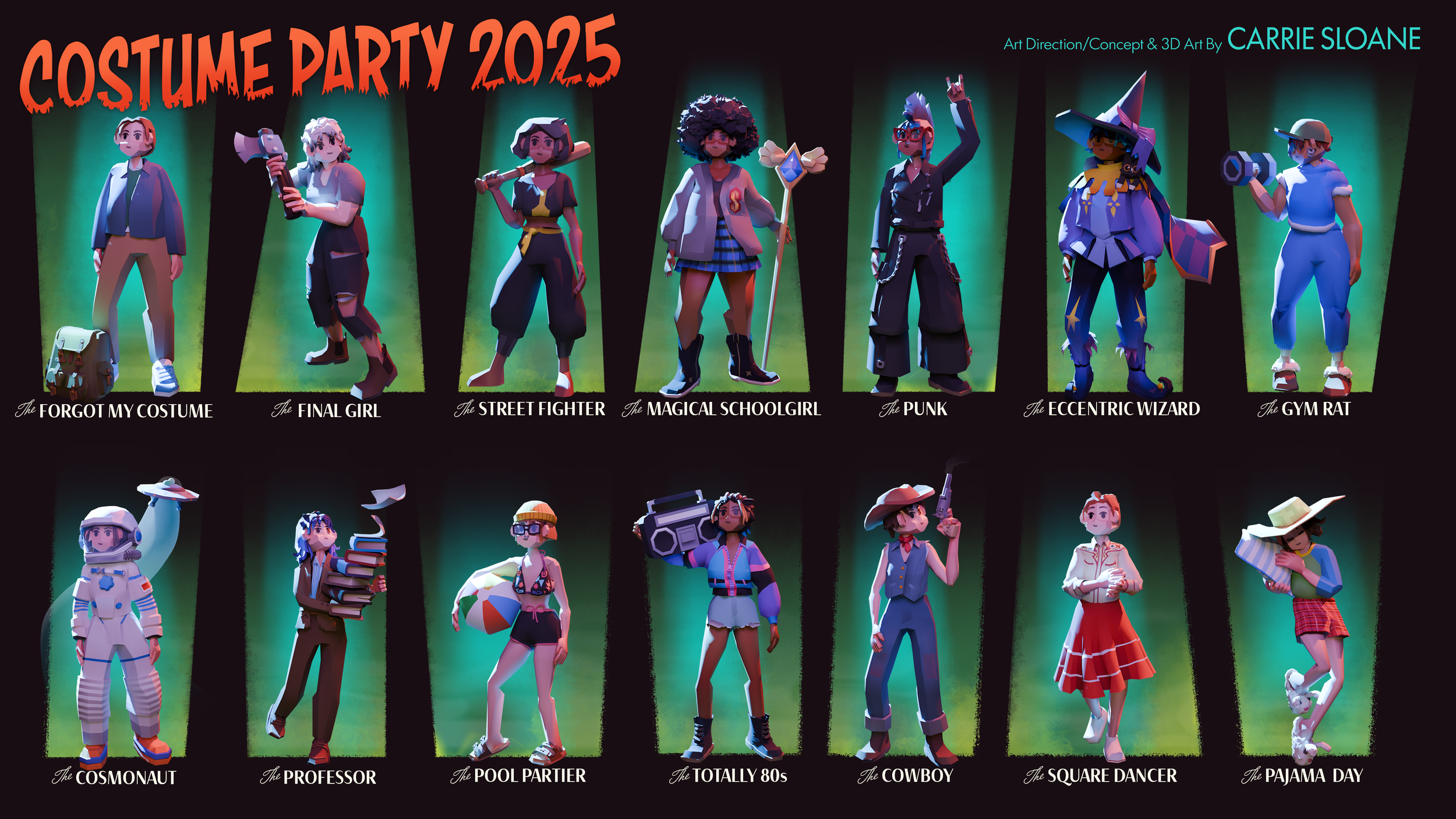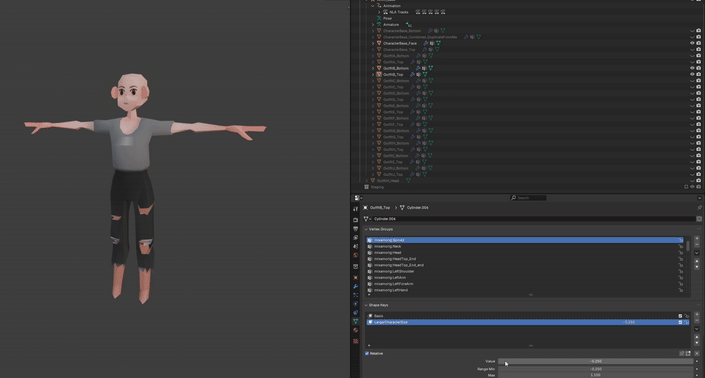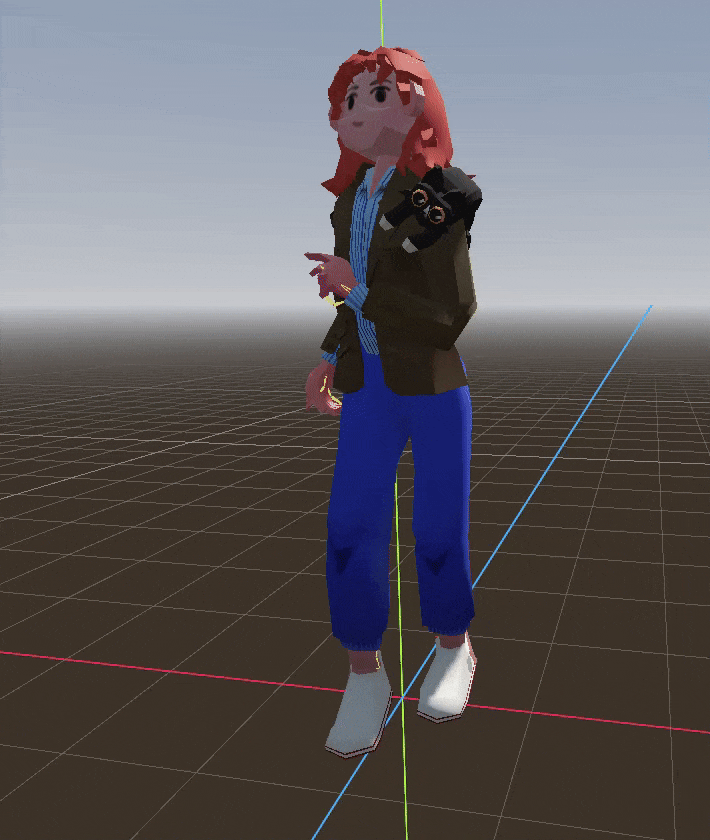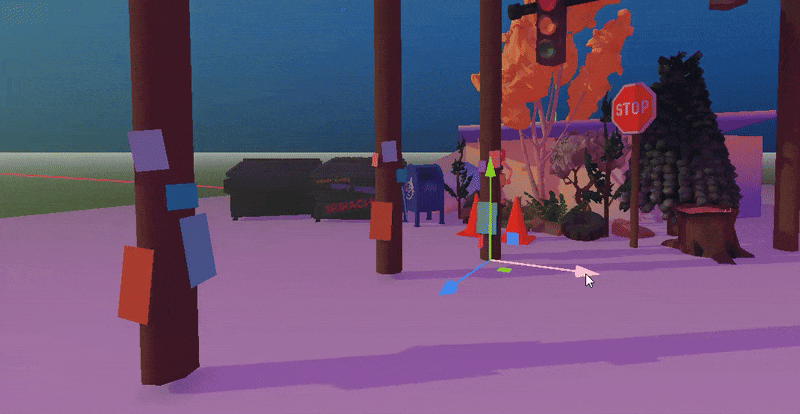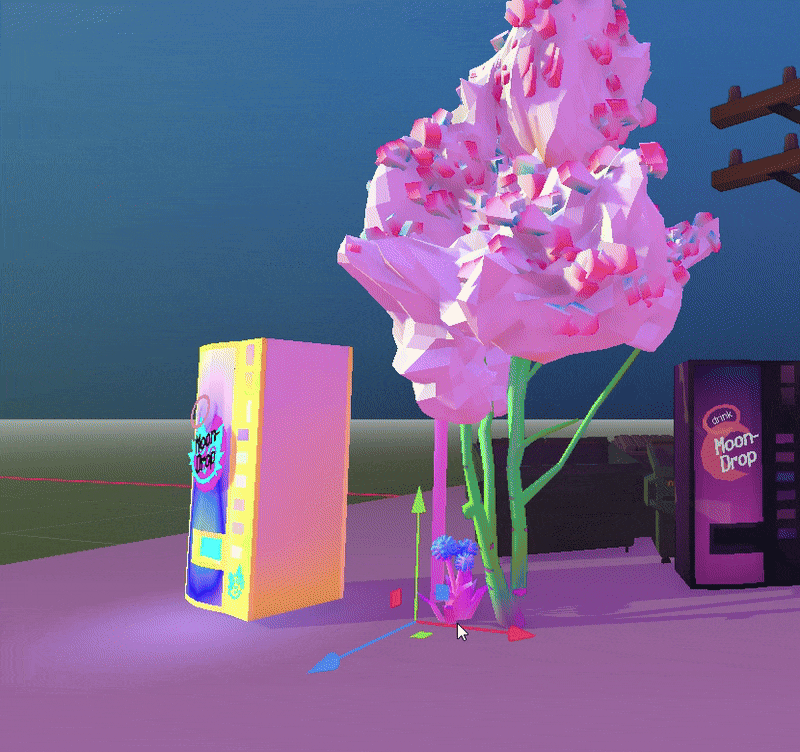Carrie Sloane
Senior Game Artist
Costume Party 2025!
I was responsible for everything art-related in this project, which originated with the Road Trip Game Jam. I started developing this game with friends in Godot, but stopped due to other time commitments.
Our vision was a road trip adventure with your weird friends, who all show up in silly and road-trip-inappropriate outfits. Fellow road-trippers were procedurally generated in-engine (more on this below!). Some of their outfits were planned to have effects on in-game stats - for example, the “Professor” outfit might add a bonus to the Intellect stat, etc.
We envisioned a fairly zoomed-out camera angle for this project, similar to that of survival games like Overland or more tactical games like XCOM 2. With this in mind, I came up with an art direction that would read well when viewed at a small scale. This art direction needed to also be quick to make and iterate on for one person.
Did you know I made almost everything in this shot?
Art direction
This workflow and art direction relies heavily on shape language and blocks of color, so I focused on creating fun, distinctive silhouettes. I was inspired by more illustrative and anime-influenced art styles by artists like ND Stevenson, Drew Shields, and Dani Diez, as you can see in my reference board image below. I did a lot of research and reference-gathering for all their outfits and hair, which I then created concepts for and made into 3D.
Reference board + inspiration
The workflow I created uses vertex colors as textures, so none of these clothing patterns involve a typical UV’d texture map. This means all the details and patterns are created using geometry only - yes, including things like the Square Dancer’s shirt, Magical Schoolgirl’s skirt, and Pool Partier’s top! I decided that managing this geometry complexity was a worthy trade-off in exchange for not having to create UV maps.
The character’s facial features are the one instance where I chose to use typical UV’d textures, which are slightly offset out from the face geometry. I used alpha textures here, to enable easy swapping to create different expressions and eye styles.
Promo stills!
Technical setup
I used the standard rig by Mixamo for these characters and set up Mixamo animations in-game, including retargeting animations and animation controller setup. All weight painting and posing for these renders was done by me.
When spawned in-engine, I set up the characters to have several procedural elements; the top and bottom pieces are randomly picked to create different combinations, as well as hair and shoe pairings. They’re also set up with separate skin and clothing materials to add variety in skin color, and to procedurally recolor their clothes. And finally, they use shape keys to vary their body shapes, like this:
Shape key setup for body shape variation (shown in Blender)
I also set up a system using Godot’s BoneAttachment3D node where characters could spawn in with accessories attached to specific bones. Specifically, I envisioned a system where characters could (very rarely) spawn in with a “shoulder pet”, like the Eccentric Wizard’s shoulder cat. For the cat, I created my own rig from scratch and made a simple idle animation for them:
Shoulder cat + walk cycle!
Environment art
I used the same vertex color-based workflow for environment art, too, with additional support from shaders I created in VisualShaders (Godot’s equivalent of Shadergraph). I used this to create custom node-based shaders, which allowed for things like random-seeming colors depending on where assets were placed:
Demo of random-seeming colors depending on asset placement
Here’s a render of the environment assets I created for this project - focused on parking lot-themed assets, per the road trip theme.
I used VisualShaders’ especially cool VisualShaderNodeColorOp node to do color operations, like inverting + overlaying a blue/purple color to create a pastel “dream world” aesthetic, which we were planning to be part of an alternate dream realm:
Demo of NodeColorOp in action to create a pastel dream world
Render info
The main renders for this project are rendered within Blender using Cycles. For the character sheet, everything is composited onto a background in Photoshop, where I did the graphic design elements. I was aiming for a vintage horror movie poster direction here, and I had a lot of fun with this!
Thank you!
Thank you to all of my friends, family, and peers who helped with parts of this! Specifically:
James > for rigging + skinning advice and help
Loren > for Blender shader help + moral support
Kayla > for gun consultation for the Cowboy’s gun (it’s based on a Colt 1855 Root Revolver)
Kenzie > for consultation about the composition + general art direction thoughts
Bree > for programming on the game project itself
Kara > for game design on the game project itself
Norah > for the great Halloween theme idea!

